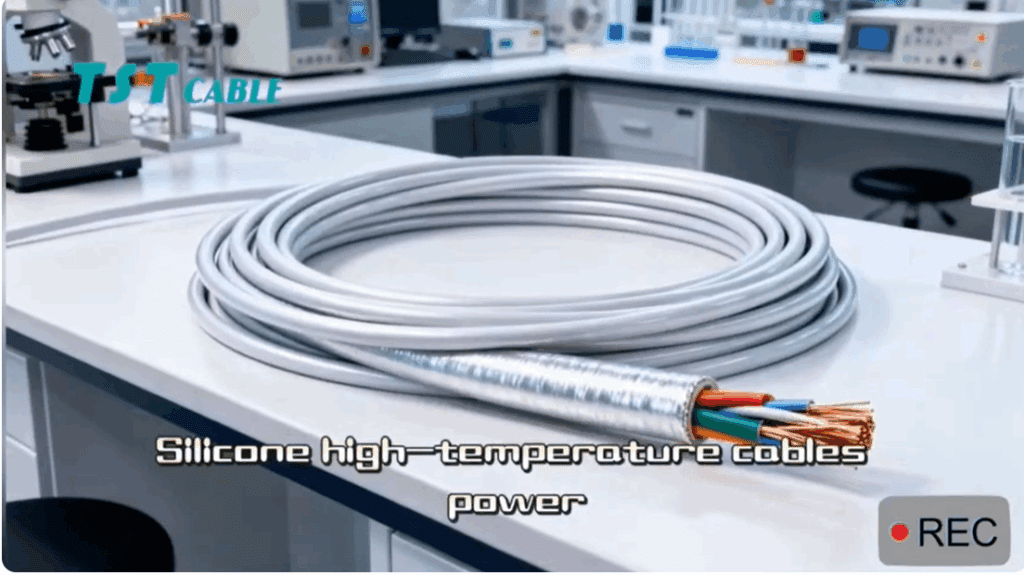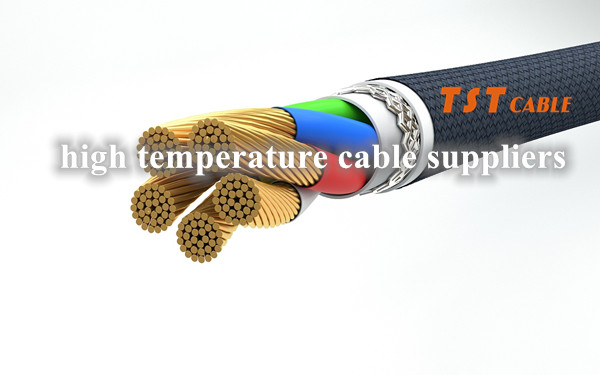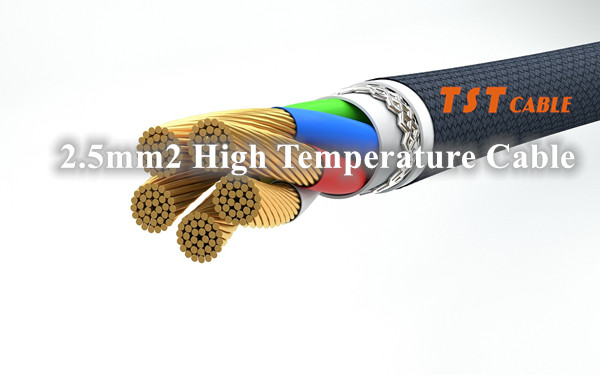First, the definition and classification of high temperature cable single core
High-temperature single-core wire is a kind of cable line used in high-temperature environments, which is manufactured using high-temperature-resistant materials to ensure normal conduction of electrical signals in high-temperature situations. High-temperature single-core wire can be categorized according to the material: silicone type, PTFE type, mineral insulation type and so on.

Second, the specification parameters of high-temperature single-core wire
- Conductor material: copper, nickel, copper-nickel alloy, etc.
- Conductor cross-sectional area: 0.08-300 square millimeters
- Outer diameter range: 0.5-20 millimeters
- Temperature resistance range: -60℃~+1000℃.
- Rated voltage: 450V-2000V
- Standard: GB, IEC, UL, VDE, JIS, etc.
Third, the use of high-temperature single-core wire advantages and scope of application
High-temperature single-core wire has good high-temperature resistance and fire performance, can work normally in a high-temperature environment, and can withstand high-voltage current, long service life, good insulation. Therefore, high-temperature single-core wire is widely used in high-temperature fields such as mechanical equipment, aerospace, electric power, electronics and chemical industry, such as heat treatment furnace, glass manufacturing equipment, high-temperature furnaces, petrochemical equipment and so on.
The above is an introduction to the specifications of high-temperature single-core wire, only when the purchase of a clear understanding of the required specifications and areas of application, in order to ensure the working effect and safety of the cable. At the same time, it is also necessary to pay attention to the purchase channels of the wire and the credibility of the manufacturer in order to avoid the impact of low-quality products.
Fourth, the difference between single-core high-temperature cable and double-core cable
First of all, from the definition and use, single-core high-temperature cable is a cable specifically designed to work in high-temperature environments, its conductor, insulation and sheath can maintain stable electrical and mechanical properties in high-temperature environments. A double-core cable, on the other hand, is a cable with two conductors, usually used to transmit electricity or signals. In terms of structure, single-core high-temperature cables are simpler, with only one conductor, while double-core cables contain two wires.
Secondly, the application environments of the two are also different. Single-core high-temperature cables are often used in high-temperature environments such as power transmission, high-temperature smelting, aerospace, and nuclear energy due to their excellent resistance to high temperatures. On the other hand, double-core cables are more often used for power transmission and signal transmission in general environments.
Further, the two also differ in electrical performance. Single-core high-temperature cables are able to maintain low resistance, reactance and capacitance in high-temperature environments, ensuring low energy consumption at high voltages and safe and reliable operation. While double-core cables may differ in electrical performance according to specific specifications and application environments.
Finally, from an installation and maintenance point of view, twin-core cables may be more convenient in some respects. For example, dual-conductor heating cables have a relatively simplified laying process during installation due to their structural characteristics, where only the terminals need to be connected to the power supply and there is no need to deal with the tail end of the wiring. In addition, the electromagnetic radiation of double-conductor heating cables is usually smaller, which reduces the interference with the surrounding environment to a certain extent.
Fifth, the main difference between TST CABLES single-core high-temperature cables and ordinary cables:
- Material and high temperature resistance: TST CABLES single-core high-temperature cables are manufactured with special high-temperature resistant materials, and their conductors, insulation and sheaths are able to maintain stable electrical and mechanical properties in high-temperature environments. This makes TST CABLES single-core high-temperature cables able to work safely and stably in high-temperature environments above 200℃ or even 600℃, whereas ordinary cables are unable to achieve such high-temperature-resistant performance.
- Application environment: Due to the excellent high temperature resistance of TST CABLES single core high temperature cable, it is usually used in high temperature environments such as power transmission, high temperature smelting, aerospace, nuclear energy and other fields. Whereas ordinary cables are more commonly used for power transmission and signal transmission in general environments.
- Electrical Performance: In addition to high temperature resistance, TST CABLES single-core high temperature cables also typically have lower resistance, reactance and capacitance, which allows them to maintain low energy consumption at high voltages, ensuring safe and reliable operation. Ordinary cables may not be able to meet such high standards in terms of electrical performance.
- Anti-corrosion and corrosion resistance and anti-interference ability: in the high temperature environment, the cable not only needs to withstand high temperature, but also may face corrosion and oxidation problems. tst cables single core high temperature cable usually has a strong corrosion resistance to deal with this harsh environment. At the same time, it also needs to have good anti-interference performance to ensure the stability of signal transmission in high temperature environment. And ordinary cables may perform weakly in these aspects.
To summarize, single-core high-temperature cables and double-core cables have obvious differences in terms of definition, use, application environment, electrical performance, as well as installation and maintenance. When choosing cables, it is necessary to choose according to the specific application scenarios and needs.
For more information on low-smoke, halogen-free, flame-retardant, high-temperature-resistant cables(high temperature cable single core and double core cable) or to customize cables for your machinery or system, visit https://www.tstcables.com/contact-us/
or send an e-mail to :lixiangchao@testeck.com.
Also available in:
English





